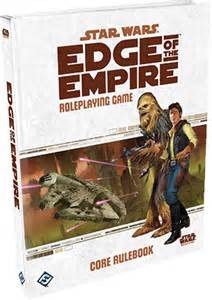Someone in a forum asked for fantasy novels set in a world with a style similar to the old videogame Morrowind (so far we’re mostly drawing blanks) and that got me thinking some more about that particular setting again. Back when I was 18 I thought it was a bit daring in how different it is from “proper fantasy” and it was ultimately the gameplay of the series that never got me really deeply invested in the game. But the setting and particularly it’s aesthetics stuck with me ever since and these days I hold it in very high esteem precisely because it’s so different.
While the stuff I had been working with before I nailed down the original concept for the Ancient Lands was pretty generic standard fantasy stuff and I am not ditching everything of that just because it’s generic, I very quickly got excited about the idea of also drawing inspirations from some very nonstandard works to create a somewhat unique style for my own world. Among Morrowind and Star Wars, there’s also the two classic and very quirky Dungeons & Dragons settings Dark Sun and Planescape, the continent Kalimdor from Warcraft III and Xen’drik from Eberron, and at least visually I am very taken with the John Carter movie. And thinking about what makes Morrowind so unique and interesting that could be found in unrelated fantasy novels also got me to start looking for what things these settings have in common that I might incorporate directly into my own setting.
And one very destinctive thing thing is that not only the environments look somewhat otherworldly, the wildlife is also completely different from what we have in Europe and North America. There are no dogs and wolves. Also no bears and no wild pigs. And people don’t keep horses, cows, and sheep. I already created a good number of animal-like creatures, mostly based on reptiles and insects, many of which can serve quite similar roles. So how about kicking out the dogs? And the wolves and the horses, and the sheep? Horses would be the biggest immediate change as far as players are concerned, but being all forests, mountains, and islands they didn’t really have much of a prominent presence in the setting to begin with. Usually “nonstandard fantasy” means not having elves and dwarves and giving people guns. (Yes, not only is there such a thing as “standard fantasy”, there’s also “standard nonstandard fantasy”.) But going the opposite direction and taking even more real world elements out of the setting and replacing them with more made up things might actually be a really interesting direction to explore. It worked for Dark Sun and Planescape, and those are probably the two best settings ever done for RPGs.


